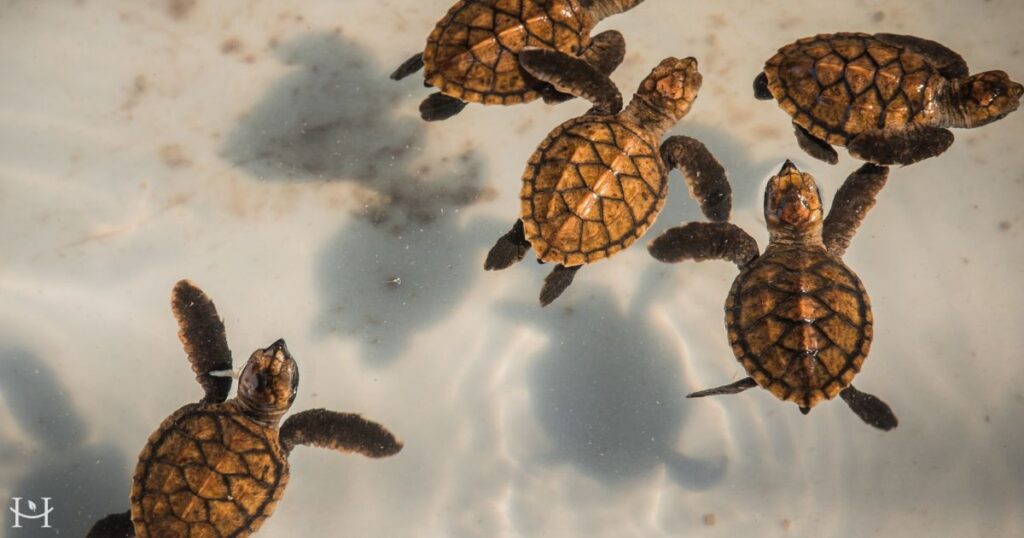In the following article, I take up the topic of Responsible Tourism, in which, based on reliable sources, I will try to point out what we should pay attention to and what to avoid while being in Asia, and beyond.
During one of my trips to Koh Phangan, a group of friends and I passed by a place called “elephant sanctuary.” I had always dreamed of touching an elephant, so I immediately stopped to check out the center. After a while, Anton (German friend) pointed out to me the chains hanging from the necks of the giants, while communicating that this place exploits animals for fraudulent donations. In that moment, my eyes were opened to the fact that I need to be more responsible and even suspicious of the attractions that Thailand, Asia, the world has to offer.
“Responsible tourism is about “creating better places to live and better places to visit. “* Responsible tourism requires that operators, hoteliers, governments, local residents and BEFORE ALL tourists take responsibility and take action to make tourism more sustainable.”
(Source: https://responsibletourismpartnership.org/what-is-responsible-tourism/)
1. Tourism marketing - fake Elephant Sanctuaries
One of the most popular attractions in Thailand (and Asia in general) are elephants. The very word “attraction” is alarming, as nothing alive should be advertised in this way. Few people realize how much suffering can hide behind the walls of places that advertise encounters with the gray giants.
During my short stay in Phuket, I absolutely wanted to visit an elephant reserve. A colleague I was visiting immediately pointed out a place that he himself had ticked off and practically immediately mapped out a route on Google to take me there. I protested because I wanted to verify whether the place was ethical and the reviews on Google clearly communicated that it was not.
Bathing with an elephant vs. math and logic
The itinerary for visiting elephant centers very often includes an “elephant bath” – sounds harmless, but let’s consider some simple math: there are usually 5 – 10 elephants in the centers. Let’s assume that 100 people visit the place per day. How many times will the elephant be forced to bathe and pose for photos?

Reading the various sources that make up organizations that educate about Responsible Tourism – I find that bath with an elephant is not ethical. If something becomes a mass attraction involving wild animals, it is mostly abused and causes harm to them.
Red flags:
- chains around the neck
- workers use violence
- being offered a photo on the back of an elephant or an elephant ride
- tricks involving an elephant
Meeting with an elephant – rules:
- beware of the names “Sanctuary” “Reserve” – this is often marketing
- verify the place you plan to visit:
- information on the websites of local environmental organizations
- negative reviews on Google
- do not participate in elephant baths
- ask questions of keepers
- observe how elephants are treated
- if you feed an animal, don’t do it pushily, most important: respect and empathy
Put down your phone and experience. It's a magical moment
When I finally found a place in Phuket that I decided to visit, I was lucky enough to be the only person at the resort. I spent an hour feeding 5 adult elephants. Each of them eats more than 200 kg of fruit a day, so their upkeep is very expensive. At first, each of the giants was only interested in getting as much fruit as possible, but with every attempt to touch them, they moved away. I understood that they were thus forced to “beg for food” in exchange for the tourist’s attention. I didn’t want to be pushy, so I didn’t push for physical contact, however, I wanted the animal to understand that I was there and that I was noticing them, not exploiting them. Over time, they began to trust me, allowed me to touch their foreheads and trunks, came close to my face and we looked into each other’s eyes. I get emotional every time I think about it. About 15 min after I came, it started to rain, I was standing on the un-roofed part and after a while I was all wet, but it was a special moment in a special company. An experience I will never forget.
Of course, going to this place, I also wanted a photo, but honestly – after 1 second of meeting, I didn’t give a damn, my phone stayed in my pocket, and I focused my full attention on… Elephants. Only the guide suggested that I give him the phone, then he captured the day for me.
2. Sad exploitation of animals - NO for elephant rides!

One of the worst things that needs publicizing, education and disapproval is elephant riding. This seemingly innocent “attraction” involves the cruel suffering of an animal that has been broken mentally and physically for a long time in order to enforce its obedience.
It is not without reason that in Africa there are warnings about a threat that most of us are unaware of – elephants. These animals are distrustful, so they protect their own herd with offensives.
Consider what the animal has gone through to allow humans to ride on its back.
- Elephants are taken away from adults to be trained from an early age
- animals are trained with beatings, violence both mental and physical
Do not use and pass on:
- do not enjoy attractions involving elephants: rides on their backs, performances and photos on their backs
3. Big, dangerous cats whose place is in the wild

There are numerous places in Asia that offer photos with tigers. As with elephants, this involves the vicious training of the big cats. In these types of places, workers use bamboo sticks for training, with which the animal has probably been beaten from a young age. They are kept in small cages to limit stimuli, and are often drugged to sedate them for a visit from tourists.
In Thailand, it is still legal to own tigers and leopards in a domestic setting. This is often the way to try to demonstrate one’s social status. However, if the “owner” can not cope with the training, and the instinct of the wild animal takes the upper hand in the best case are removed his teeth, claws. The tiger is brutally mutilated.
Do not use and pass on:
- do not use attractions involving big cats: photos, tricks
4 Cheated good deed - birds and turtles imprisoned for profit
At temples you can often meet vendors with birds in bamboo cages, where the “owner” offers the “honor” of releasing the animal for a fee. In Buddhism, good deeds are rewarded, which is why this activity is so advertised to bring us good “karma.”

Birds, animals that can travel the length and breadth of the world, spend their lives in a small bamboo cage. And you don’t return his freedom at all, because once “freed,” trained birds from the chick return to their owner, because they don’t know life outside of it.
Do not use and pass on:
- By paying to release a bird, you are realistically imprisoning it for life
"Free the turtle"

April to October. Unfortunately, this realm too is being exploited for profit as a tourist attraction. Under the banner of “release the turtle,” a practice that is horrible in my opinion is advertised, where the tourist is given a turtle in a container to then release it into the sea… Again, sounds like a good deed, but….
Let’s think about it, is it ethical to expose a turtle to the stress and danger of a tourist dropping the container or not releasing the animal with due care? In addition, we do not know the conditions under which the turtles are kept until they are “handed over.” Yes, there are organizations that expertly take care of the eggs for hatching, but the entire process should be off limits to outsiders. This process should be simplified to a minimum, with no third parties involved.
Do not use and pass on:
- Do not use and pass on: don’t use commercial turtle release, leave it to professionals
5. Monkey held hostage by Instagram
Another example of what looks funny and lands on Instagram, but actually involves the slavery of an intelligent animal. If you look at how agile these animals are, how like a human they use their paws (in addition, equally efficient front and back) you will notice how similar they are to us and what they can do. Is it moral, then, to imprison and exploit the humanoids?
Monkeys are either “owned” by the “photographer” taking the pictures, or they are bribed with food. In the latter situation, we have a place with another practice that is being vociferously alarmed about throughout Asia – don’t feed or touch the monkeys! Why? Why? Because they are dangerous, they bite, they jump on people, they steal. And as a result of teaching them that we are a source of questionable food (chips, candy), the animals abandon their natural instincts to acquire healthy food.
Do not use and pass on:
- don’t use “services” to take pictures with wild animals, including monkeys
- do not feed monkeys
- do not touch monkeys
6 An underwater but fragile kingdom

Asia boasts beautiful beaches and crystal clear water. That’s why scuba diving and snorkeling is a popular attraction. However, while taking advantage, it is worth remembering that the underwater world is more fragile than the land.
Remember and pass it on:
- watch where you stand and what you touch – corals are fragile, easily damaged
- do not feed water animals, e.g. bread is poisonous to them
During my stay of 2 months on Phu Quoc (Vietnam) I made a mistake from which I have now learned a lesson. In the north of the island is Starfish Beach, a place where dozens of starfish live by the shore, one next to the other. When I noticed a tourist taking one in her hands, I asked if it was safe – she confirmed, and I blindly, without checking this information, did the same.
Remember and pass it on:
- don’t pull starfish or other water animals out of the water – you cause them stress and they may suffocate
7. Respect your fellow man - don't forget who is visiting who

Tourism in Asia for many means a kind of escape from reality. We end up in an exotic place where everything is completely different for us. This involves practices that show a lack of respect for the other person and a focus on selfish ME.
In my opinion, it is reprehensible to photograph anyone without their permission. Whether we are talking about the owner of a food outlet at an Asian market or the person who gives us a foot massage or shoe cleaning. Yes, this is their job, which they are not ashamed of, which they do for a living, but that doesn’t give us the right to film and photograph without their permission to create content for Instagram and friends.
Remember and pass it on:
- always ask permission beforehand for photos or filming
- don’t treat monks as a tourist attraction, also ask permission to take photos
Remember and pass it on:
- Remember and pass on: “good morning” and “thank you” in the local language are the minimum you should adopt
- The customs and religious rules of the place (dress, behavior)





